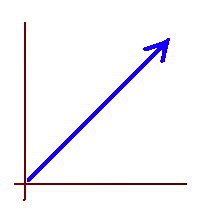Using powers of two for explaining the concept of negative exponents
Negative numbers confuse many students. Usually students tend to struggle with almost everything related to negative numbers. From the very concept of using the (-) sign to refer to conventional spatial directions (left, down, back), to the different rules for adding, subtracting, or multiplying positive and negative numbers; there are plenty of instances where the (-) sign is overlooked, or misinterpreted, resulting in a wrong answer. Given that a high number of wrong answers produce a low score, it is only natural for many students to react defensively whenever a new concept involving negative numbers shows up in their radar. This is the case for negative exponents. Remember that the first definition of exponent (positive) most students are introduced to is: “the number of times you multiply a number times itself.” When one tries to apply this definition to the case of negative exponents it does not make sense because, how do you multiply a number times itself “minus once,” or “minus twice”? One possible answer is that, when it comes to negative exponents, you do not multiply but you divide instead. Even with that interpretation the rule still needs some adjustment because, if you start with a number a, and you divide it by itself once, you get 1 as a result, so you would think a-1 was 1 but that would be wrong because 1 = a0, whereas a-1 = 1/a.
In order to avoid this kind of confusion, I follow another approach: By asking very simple questions I help the student build a list of powers of 2 from 2 to 1024, each related to their corresponding positive exponent. Then we notice the patterns how the numbers change, and how the exponents change. Then we move backwards all the way to the beginning of the list, and beyond, continuing into fractions, on one column, and into negative exponents, on the other column. In this way it becomes crystal clear to the student how the exact same pattern correlates the negative exponents to the fractions, and even the general formula a-n = 1/an becomes apparent. I have successfully used this method many, many times, and so far it has worked wonderfully, clearing away all confusion and anxiety students of all ages had around negative exponents. The key to this approach is being very thorough, and asking the right questions, in the right way, at the right time.
Quantum Interference Loss via Path Encoding and Recovery by Quantum Erasure
-
If we regard interference and entanglement as the most distinctive features
of the quantum world, then “which-way” experiments lie at the heart of
quantum ...
1 day ago





2 comments:
I also explain positive, negative, and zero powers in the context of powers of two, in my article http://www.exploringbinary.com/the-powers-of-two/ .
It is a very natural explanation. I have added a link to your site. Thank you for the reference.
Post a Comment